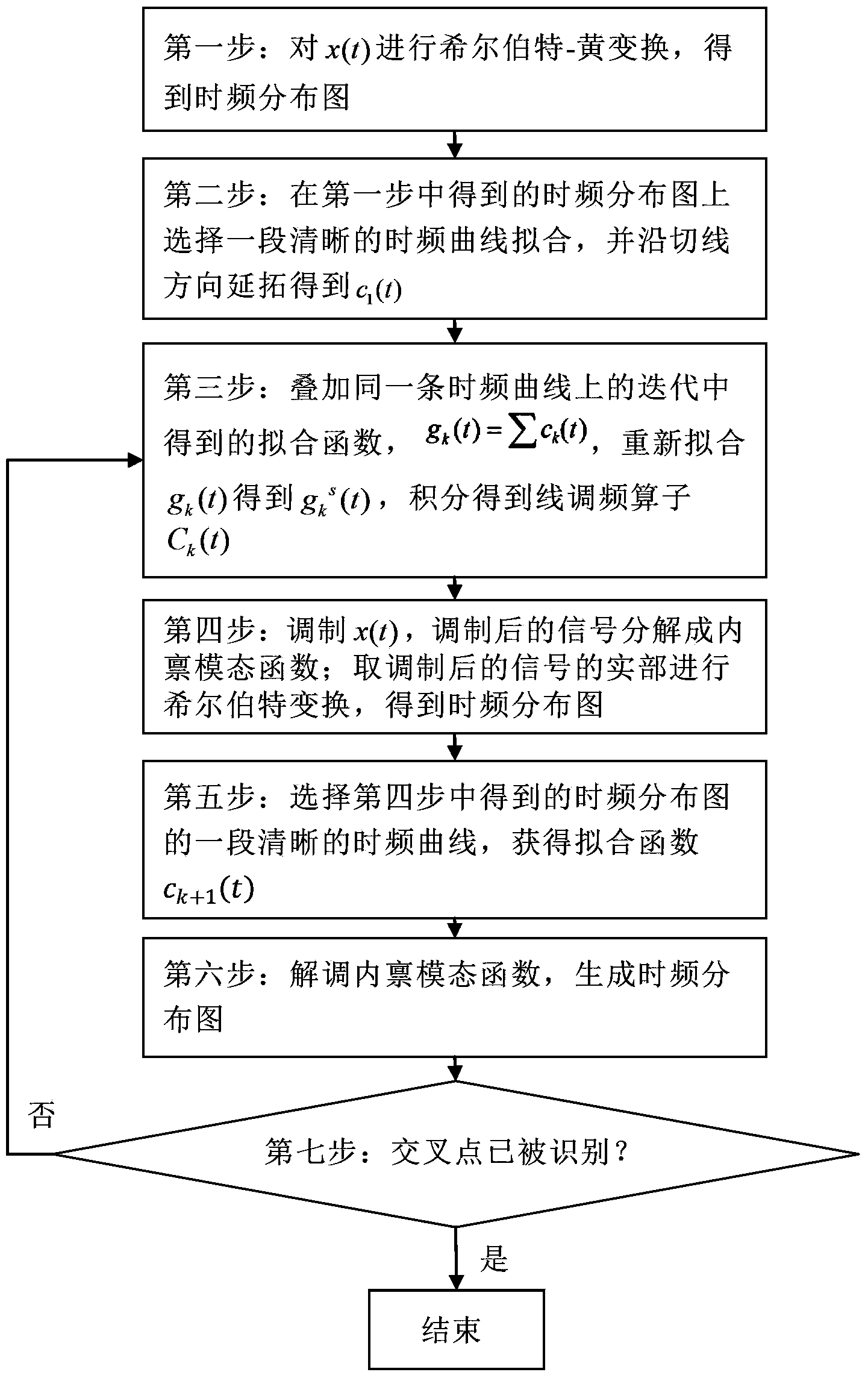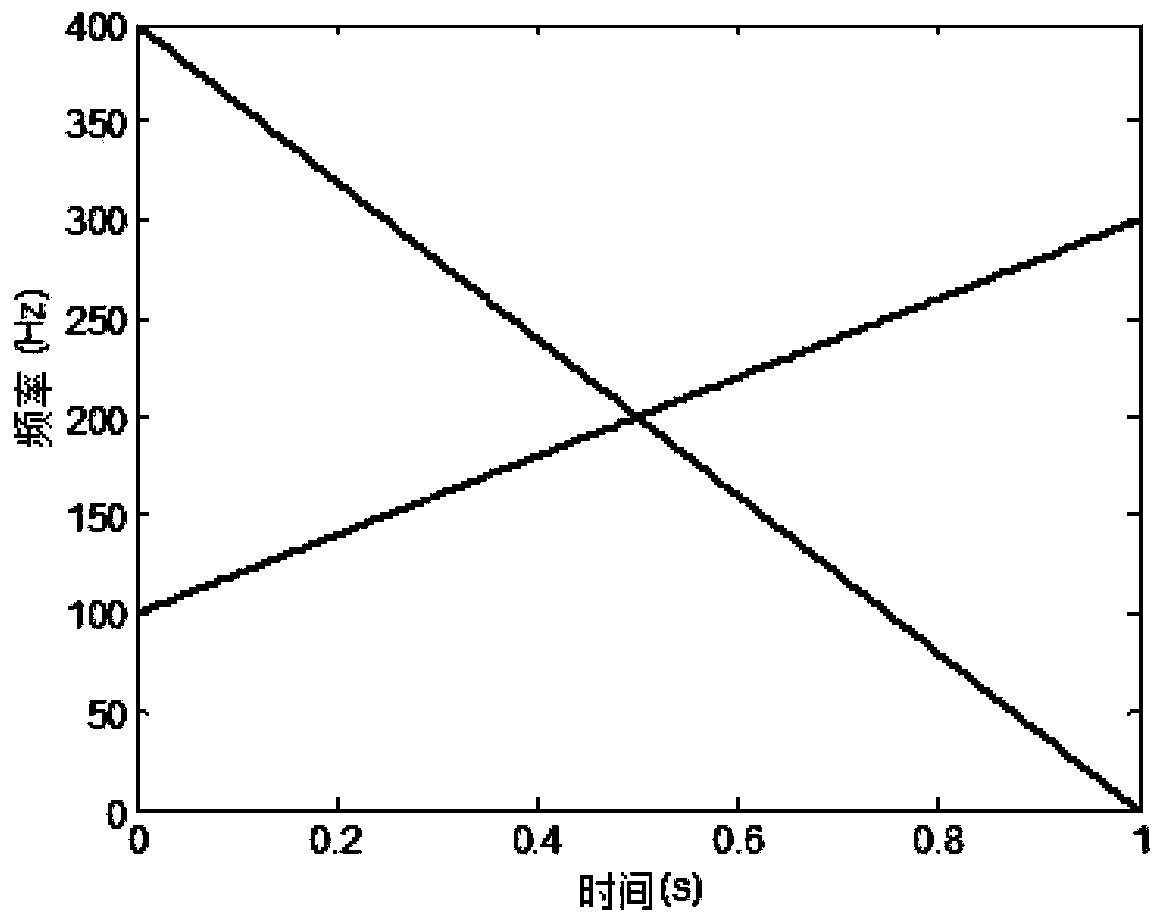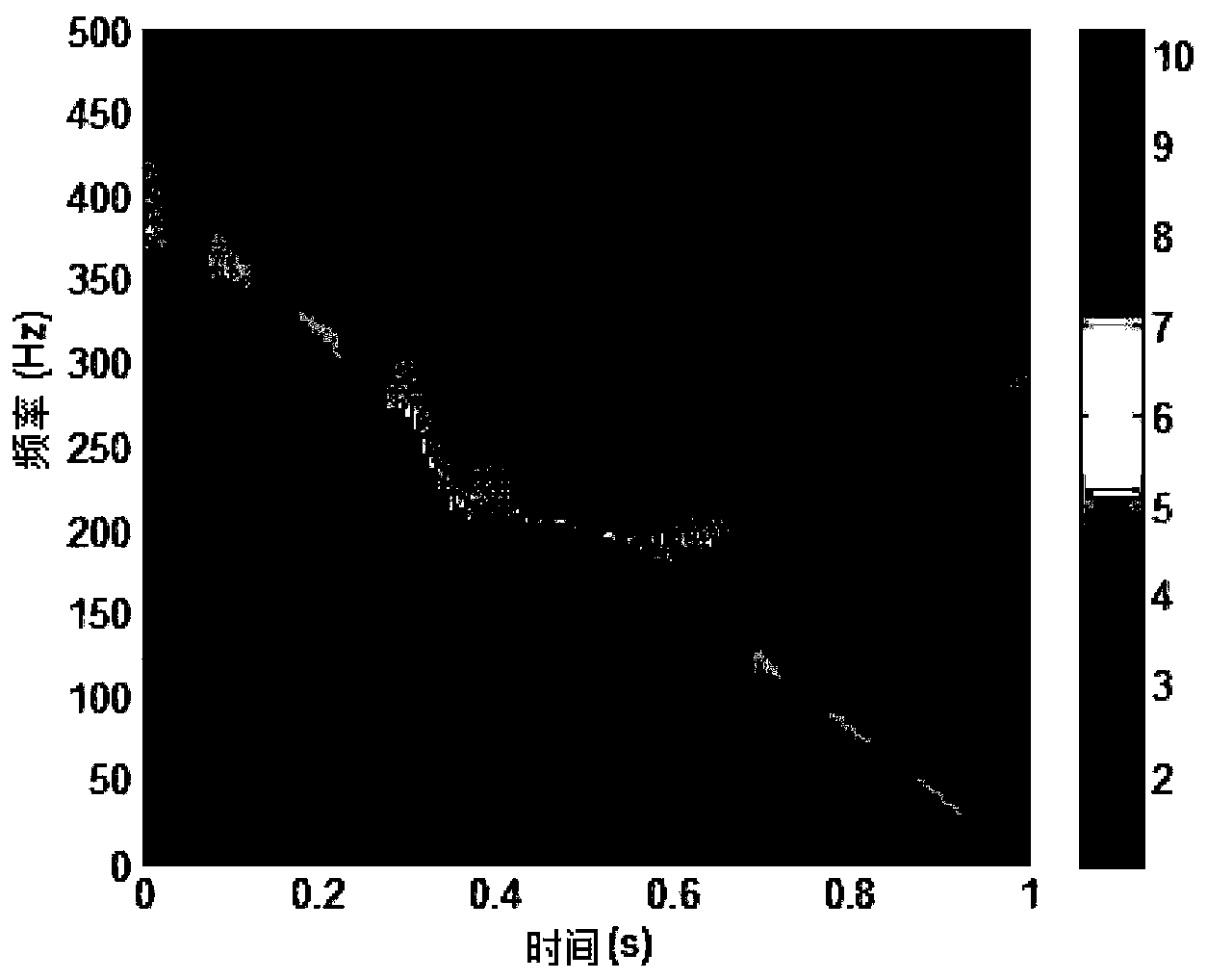Time frequency decomposition method for signals including intersections in instantaneous frequencies
An instantaneous frequency and time-frequency decomposition technology, applied in the field of signal processing, can solve the problems of signals containing cross points, no effective method, and inability to process signals containing cross points, etc.
- Summary
- Abstract
- Description
- Claims
- Application Information
AI Technical Summary
Problems solved by technology
Method used
Image
Examples
Embodiment Construction
[0052] figure 1 It is a flow chart that adopts Hilbert-Huang transform to decompose the instantaneous frequency signal containing the cross point, and the instantaneous frequency of the present invention contains the signal time-frequency decomposition method of the cross point, comprising the following steps:
[0053] The first step: Hilbert-Huang transform is performed on the original instantaneous frequency signal x(t) including intersection points to obtain a time-frequency distribution diagram;
[0054] The second step: select a clear time-frequency curve segment from the time-frequency distribution diagram obtained in the first step, and use the least square method to fit this curve with a polynomial, and then fit the function obtained along the left and right endpoints The tangent line is extended, and the continuation is extended along the tangent method of the end point until the time axis limit of the time-frequency diagram, and the fitting function after the continu...
PUM
 Login to View More
Login to View More Abstract
Description
Claims
Application Information
 Login to View More
Login to View More - R&D
- Intellectual Property
- Life Sciences
- Materials
- Tech Scout
- Unparalleled Data Quality
- Higher Quality Content
- 60% Fewer Hallucinations
Browse by: Latest US Patents, China's latest patents, Technical Efficacy Thesaurus, Application Domain, Technology Topic, Popular Technical Reports.
© 2025 PatSnap. All rights reserved.Legal|Privacy policy|Modern Slavery Act Transparency Statement|Sitemap|About US| Contact US: help@patsnap.com



